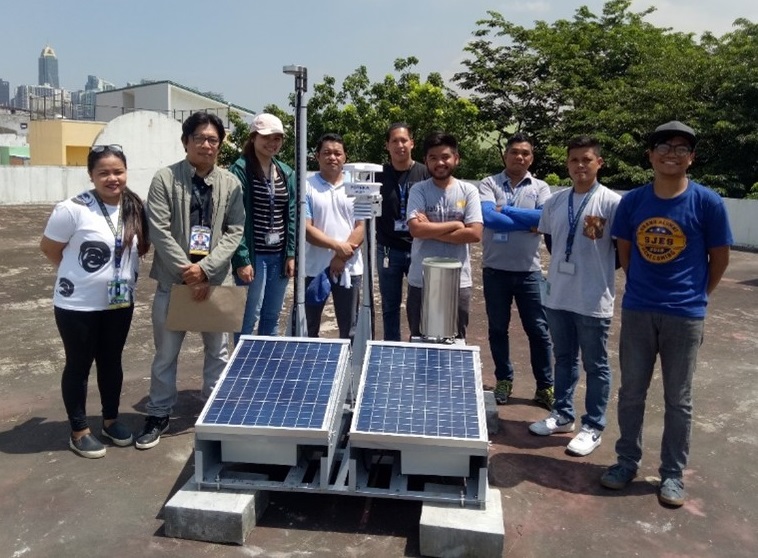The Department of Science and Technology (DOST) have installed 40 lightning-detecting automated weather stations (AWS) all over Metro Manila and in select regional DOST-PAGASA Observation and Weather Stations to determine the relationship of lightning strikes and torrential rainfall to put together a forecast method that could predict the weather at a shorter time period.

The lightning detection AWS called P-POTEKA and its variation V-POTEKA were installed under the project “Understanding Lightning and Thunderstorms for Extreme Weather Monitoring and Information Sharing” (ULAT), implemented by the DOST-Advanced Science and Technology (DOST-ASTI) with co-implementing partners from the DOST-Philippine Atmospheric, Geophysical and Astronomical Services Administration (DOST-PAGASA) and UP-Institute of Environment Science and Meteorology (UP-IESM).
The project is a collaboration between DOST-ASTI and Hokkaido University (HU) as an official development assisted (ODA) project with the Japan International Cooperation Agency (JICA) through the Science and Technology Research Partnership for Sustainable Development (SATREPS) Program. The research partnership aims to foster educational exchange, develop local expertise, and aid in establishing the infrastructure for the research.
“In the case of the Philippines, where numerous year-round thunderstorms are experienced, the integration of lightning data has the potential to provide short-term forecasts, spur meteorological studies, and benefit the community in creating disaster response strategies,” said Enrico Paringit, PCIEERD executive director.

The POTEKA is a system of sensors comprised of either a plate lightning sensor (P-POTEKA) or very low frequency (VLF) antenna (V-POTEKA), rain gauge tipping bucket and weather sensor. The weather data is received, analyzed, and processed as inputs to formulate “nowcasting” technique that may complement methods used by the DOST-PAGASA to predict weather conditions in a shorter time span.
Experts from DOST-PAGASA have initiated the assessment on station distribution in some parts of Metro Manila and its sensor exposure to optimize collection of weather data based on the World Meteorological World Organization (WMO) standard. This will ensure the information meets the standards for weather forecast.
Meanwhile, the UP-IESM delves deeper into the behavior of thunderclouds during harsh weather conditions using various weather collecting devices such cloud particle sondes, radiosondes, Diwata, and Himawari-8 satellites to characterize thunderclouds during extreme weather conditions. Combining these studies will then be related to formulate the short-term forecast.
To date, the project has provided real-time readings from the stations that can be accessed at http://philsensors.asti.dost.gov.ph.




